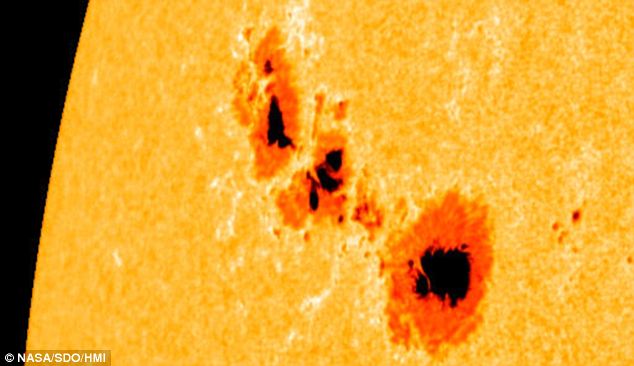What are Sun Spots
Sun spots are temporary phenomena on the photosphere of the Sun which appear as dark spots on the surface. These spots are easily identifiable as they are darker than the surrounding areas. These darker spots are actually regions of reduced surface temperature caused by concentrations of magnetic field flux that inhibit convection. It is common for sunspots to appear in pairs of opposite magnetic polarity.
Sunspots or groups of sunspots may last anywhere from a few days to a few months, but eventually decay. Sunspots expand and contract as they move across the surface of the Sun, with diameters ranging from 16 km to 160,000 km. It is said that larger sunspots can be visible from Earth without the aid of a telescope, but it is only recommended to test this with the use of approved eye shielding as to not burn the retinas. The speed at which sunspots are speculated to travel at first emergence is at the relative speed of a few hundred meters per second when they first emerge.
When first discovered?
The earliest extant report of sunspots dates back to the Chinese Book of Changes, which was written around 800 BC. Western literature did not clearly mention sunspots for another 500 years. At around 300 BC, the ancient Greek scholar Theophrastus was the first to make this documentation. The earliest surviving record of deliberate sunspot observation dates from 364 BC, based on comments by Chinese astronomer Gan De. Chinese astronomers continued to make advancements in sunspot observations to the point at which in 28 BC, they were providing regular observations in official imperial records. December 1128 saw the first drawings of sunspots, which were penned by English monk named John of Worcester.
Modern Tracking And Observation
Scientists can observe and track sunspots with land-based and Earth-orbiting solar telescopes. These telescopes work by filtering and projection techniques for direct observation. These methods include the use of various types of filtered cameras as these telescopes have specialized tools such as spectroscopes and spectrohelioscopes. These tools are used to examine sunspots and sunspot areas. Another tool utilized is artificial eclipses, which allow viewing of the circumference of the Sun as sunspots rotate through the horizon.
Amateur viewing and tracking can be done through projected images, or directly through protective filters. These protective filters include sections of very dark filter glass and project images can be done by using a telescope eyepiece to project an image without filtration onto a white screen where it can be viewed indirectly.
Why Monitor Sun Spots?
Due to its link to other kinds of solar activity, sunspot occurrence can be used to help predict space weather, the state of the ionosphere, and the conditions of short-wave radio propagation.
Further Reading
https://www.space.com/14736-sunspots-sun-spots-explained.html

Leave a comment